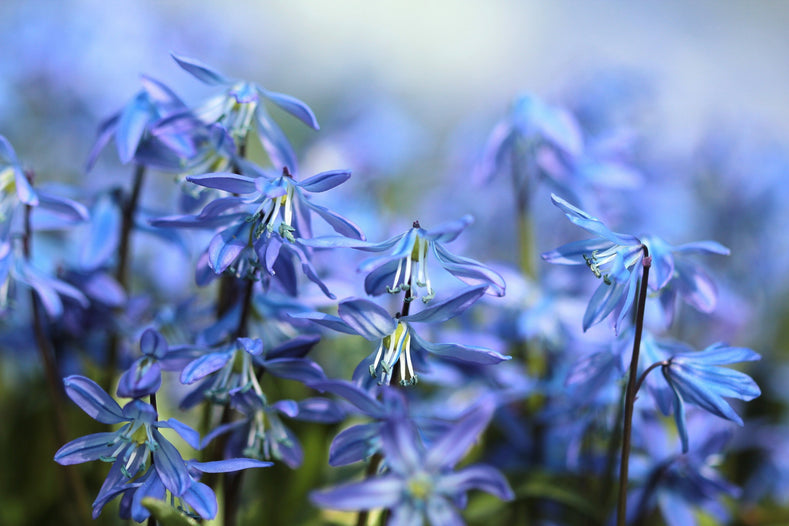Growing Guides:
How to Grow Scilla
(Siberian Squill)
Scilla are very pretty blue or white flowers that are easy to grow, hardy and naturalise well. Suitable for beds, borders, containers, rockeries and even bouquets and floral arrangements, it’s no wonder these versatile beauties are so popular amongst gardeners. Although Scilla bulbs prefer semi-shaded sites they will grow in full sun as long as the soil doesn't fully dry out in the Summer.

Planting Scilla (Siberian Squill) bulbs:
Follow our simple step-by-step guide to planting Scilla bulbs:
- Scilla bulbs are planted In Autumn, before the ground freezes. Pick a semi-shaded spot with good drainage. Scilla thrive on lawns and beneath deciduous shrubs and trees.
- Dig a hole around 6-8cm deep (follow the general rule of thumb when planting bulbs and give the bulbs at least 2 times their height of soil above them), drop the bulb in, and cover with soil. Make sure you place the bulb the right way up - Scilla bulbs look like a miniature onion with a slightly pointy head and sometimes have wiry roots growing out of the underside - plant with the pointy head / spike pointing up.
- Leave approximately 10cm between each bulb. If you are planting in containers, you can space them a little closer together.
- After planting, water well so that the soil above the bulbs settles.
- Scilla bulbs will flower in Spring. After the flowers die down, allow the plant to enjoy a rest period - there is no need to water much during this period. Leaves will also die back and at this point you can choose to tidy up the plant and remove the old leaves or just let nature take its course.
- If you have Scilla bulbs that have naturalised in grass, don’t cut the lawn until the flowers have died and the leaves have yellowed and disappeared.

